Reining
AT THE CS RANCH
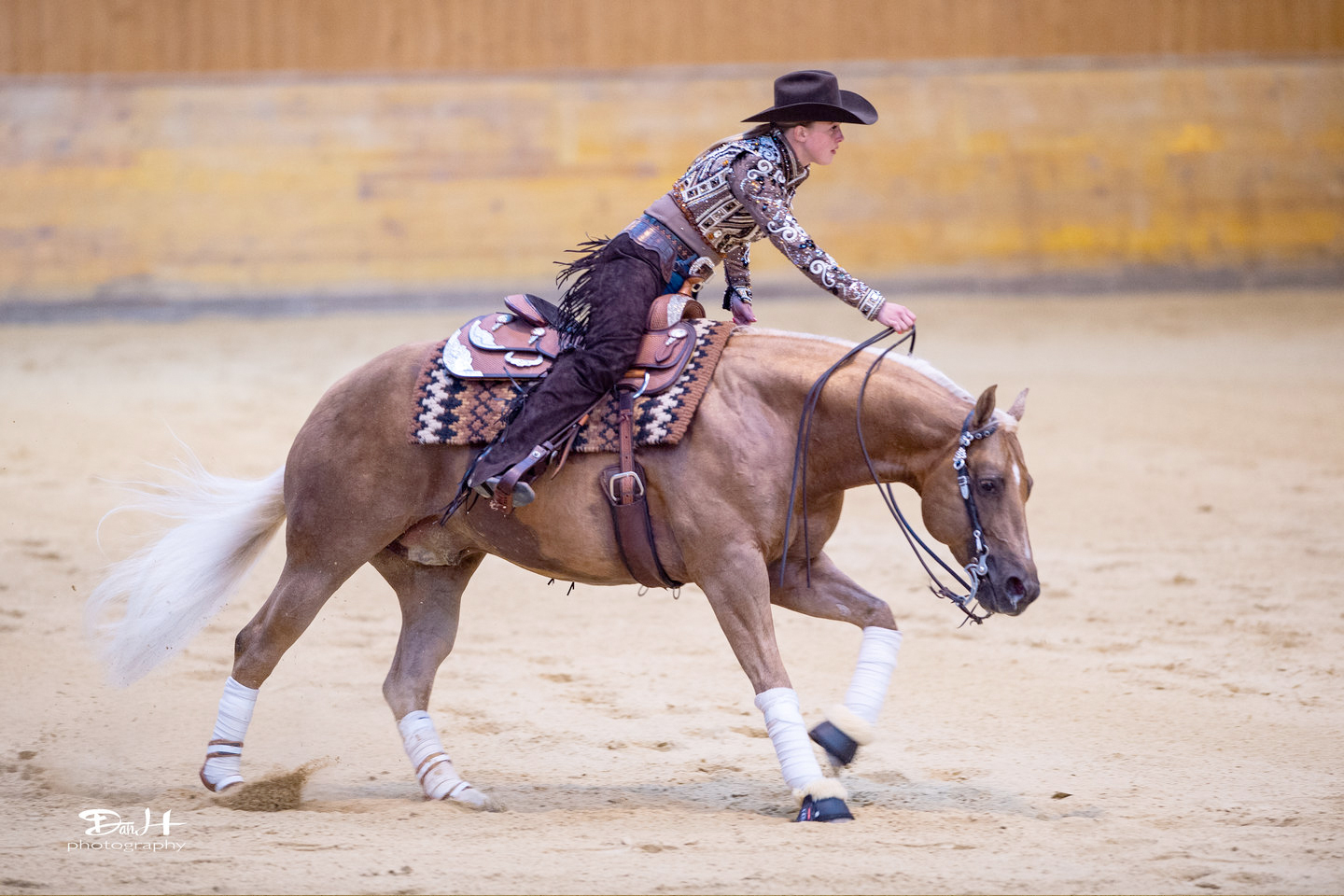
REINING
Reining is one of the most demanding disciplines of western horse-riding.
Both rider and horse must master different manoeuvres: fast and slow circles, flying lead changes, spins, sliding-stops, rollbacks and rein back, all in combinations of patterns. There are 10 Reining patterns, in which individual parts must be ridden in a fixed order. The tasks must be memorised. Horses of all breeds are accepted.
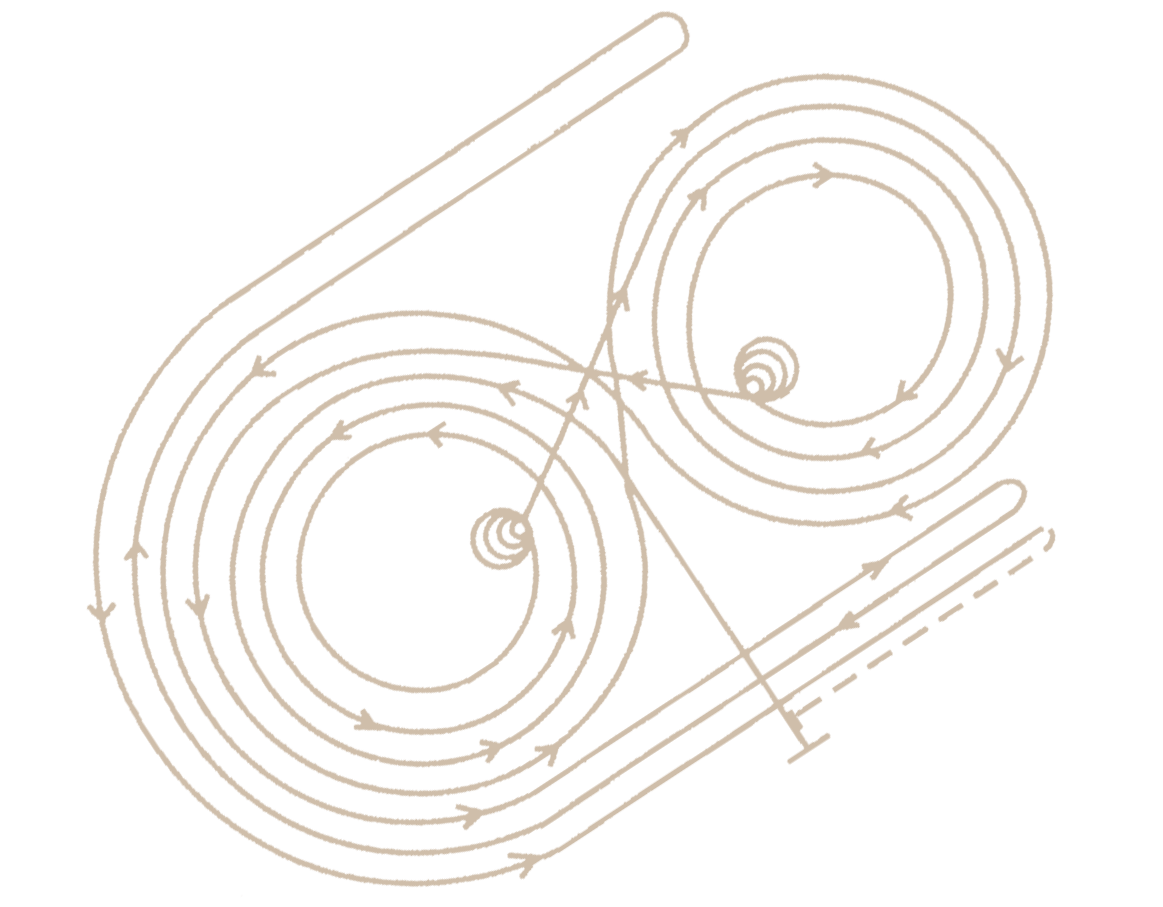
REINING HISTORY
The name Reining comes from the English word “reins”. Like most classical types of sports, Reining has its roots in the everyday life of people, in this case of American cowboys. To lead big droves through adverse and undeveloped areas, cowboys had to be in the position to change directions with the horse in a flash, to stop abruptly or to race off out of the blue to catch lost cattle.
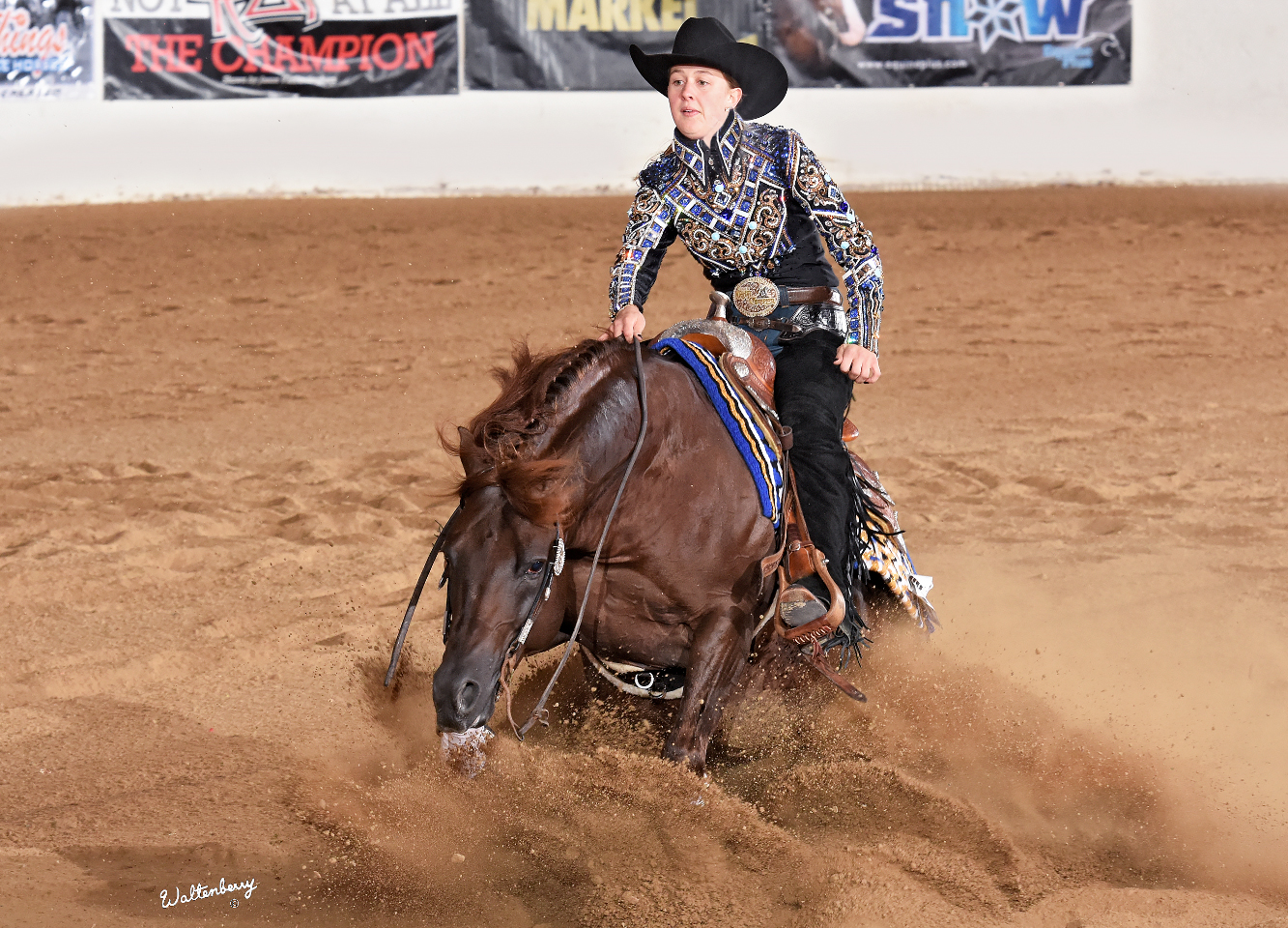
REINING SPORTS
Reining is a western riding competition for horses where the riders guide the horses through a precise pattern of circles, spins, and stops.
All work is done at the lope. Originating from working cattle, reining is often described as a Western form of dressage riding, as it requires the horse to be responsive and in tune with its rider, whose aids should not be easily seen, and judges the horse on its ability to perform a set pattern of movements. The horse should be willingly guided or controlled with little or no apparent resistance and dictated to completely. A horse that pins his ears, conveying a threat to his rider, refuses to go forward, runs sideways, bounces his rear, wrings his tail in irritation or displays an overall poor attitude is not being guided willingly, and is judged accordingly.
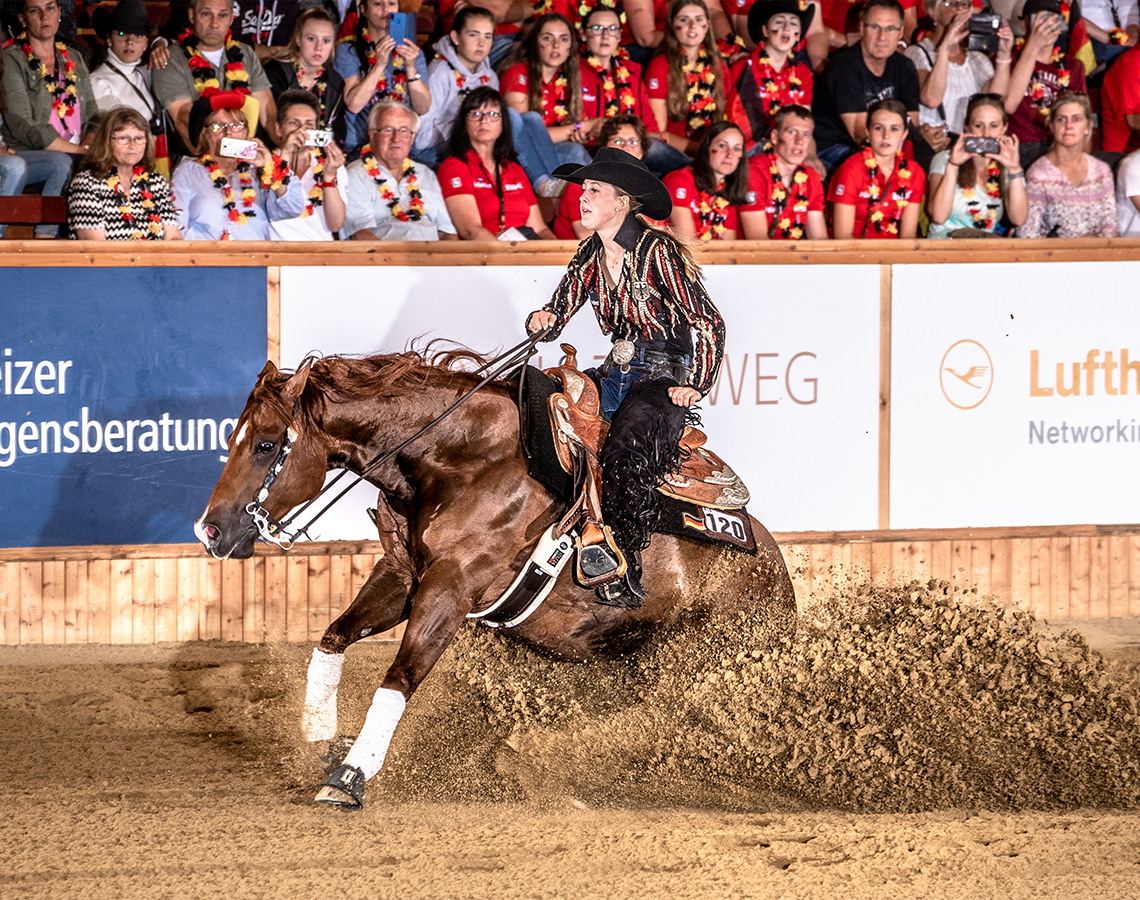
THE WESTERN DRESSAGE
Western horse-riding is the fastest growing equestrian discipline worldwide. Its popularity has crossed the Atlantic in recent years, extending from the USA to Europe. Western dressage is since 2000 an officially approved discipline of the FEI and a component of world equestrian competitions.
THE REINING MANOUVERS
Both rider and horse must master different manoeuvres: fast and slow circles, flying lead changes, spins, sliding-stops, rollbacks and rein back, all in combinations of patterns. There are 10 Reining patterns, in which individual parts must be ridden in a fixed order. The tasks must be memorised. Horses of all breeds are accepted.
CIRCLES
Circles are maneuvers at the lope, of designated size and speed, which demonstrate control, willingness to guide, and degree of difficulty in speed and speed changes. Circles must at all times be run in the geographical area of the arena specified in the pattern description and must have a common center point. There must be a clearly defined difference in the speed and size of a small, slow circle, and a large, fast circle; also, the speed and size of small, slow right circles should be similar to the small, slow left circles; and the speed and size of the large, fast right circles should be similar to the large, fast left circles.
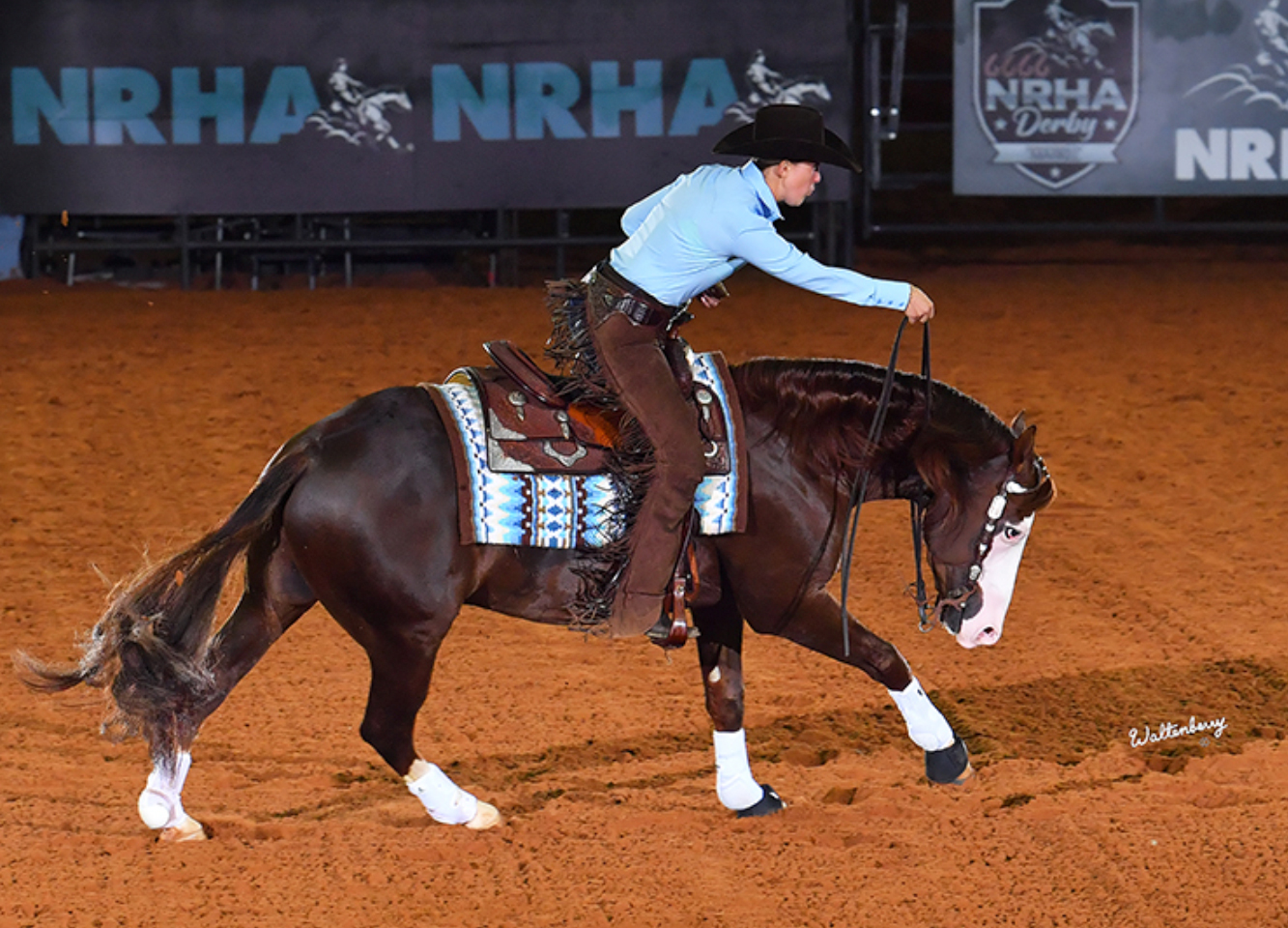
LEAD CHANGES
Lead changes are the act of changing the leading legs of the front and rear pairs of legs at a lope, when changing the direction traveled. The lead change must be executed at a lope with no change of gait or speed and be performed in the exact geographical position in the arena specified in the pattern description. The change of front and rear leads must take place within the same stride to avoid penalty.
RUNDOWNS AND
RUN-AROUNDS
Run downs are runs through the middle of the arena, and runs along the side and ends of the arena. Run downs and run-arounds should demonstrate control and gradual increase in speed to the stop.
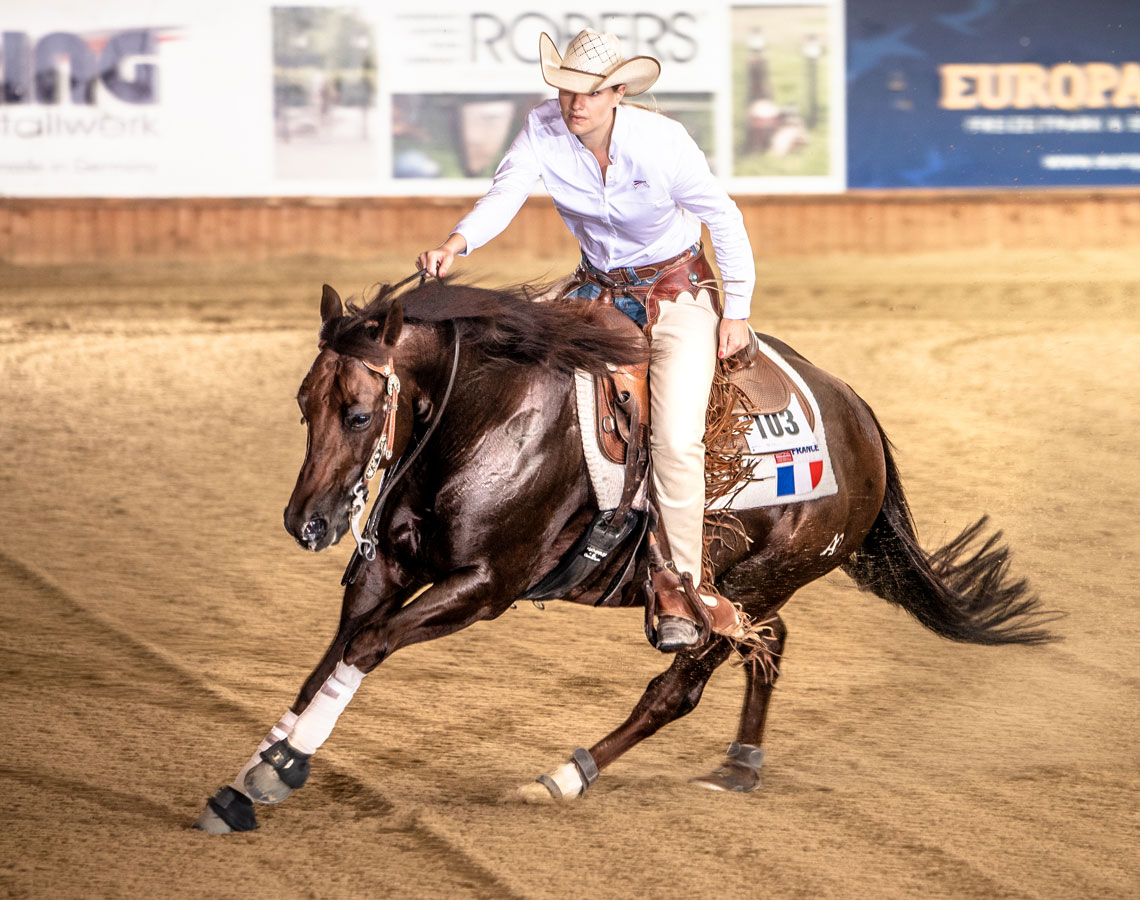
STOPS
Stops are the act of slowing the horse from a lope to a stop position by bringing the hind legs under the horse in a locked position sliding on the hind feet. The horse should enter the stop position by bending the back, bringing the hind legs further under the body while maintaining forward motion and ground contact and cadence with front legs. Throughout the stop, the horse should continue in a straight line while maintaining ground contact with the hind feet.
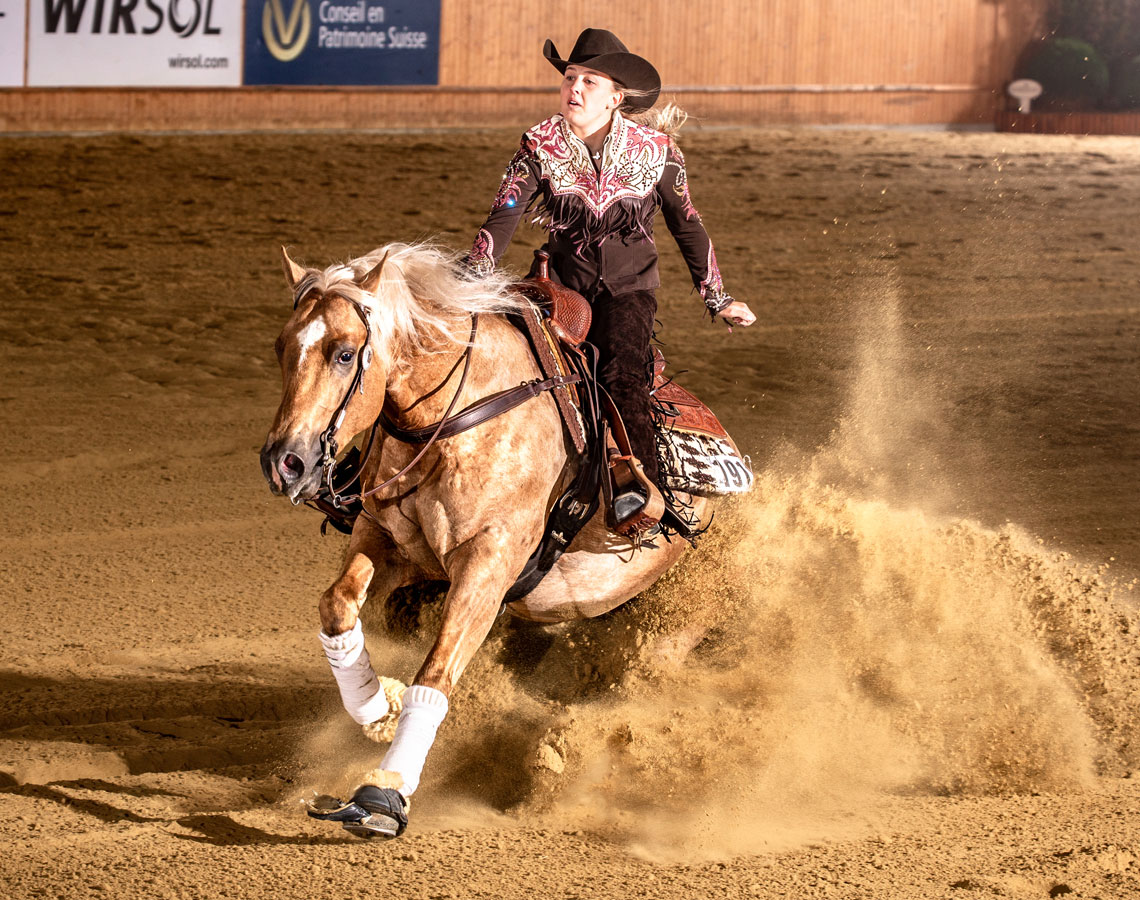
BACKUPS
A backup is a maneuver requiring the horse to be moved in a reverse motion in a straight line a required distance; at least ten feet.
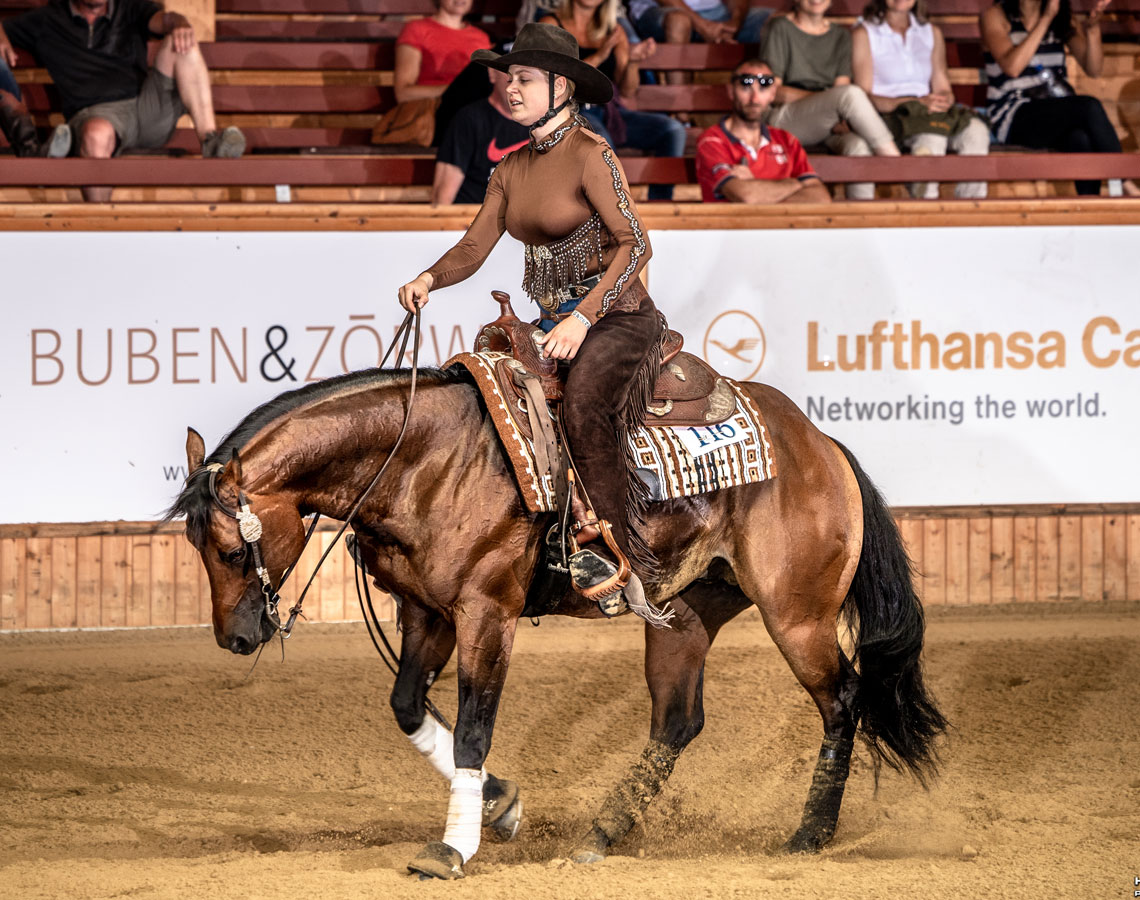
REINING:
Great Manouvers –
combined in a
complete Pattern
Our Video shows Reining per excellence – a Reining pattern during the CS Classic 2019.
SPINS
Spins are a series of 360 degree turns, executed over a stationary (inside) hind leg. Propulsion for the spin is supplied by the outside rear leg and front legs, and contact should be made with the ground and a front leg. The location of hindquarters should be fixed at the start of the spin and maintained throughout the spins and cadence, attitude, smoothness, finesse and speed are imperative.
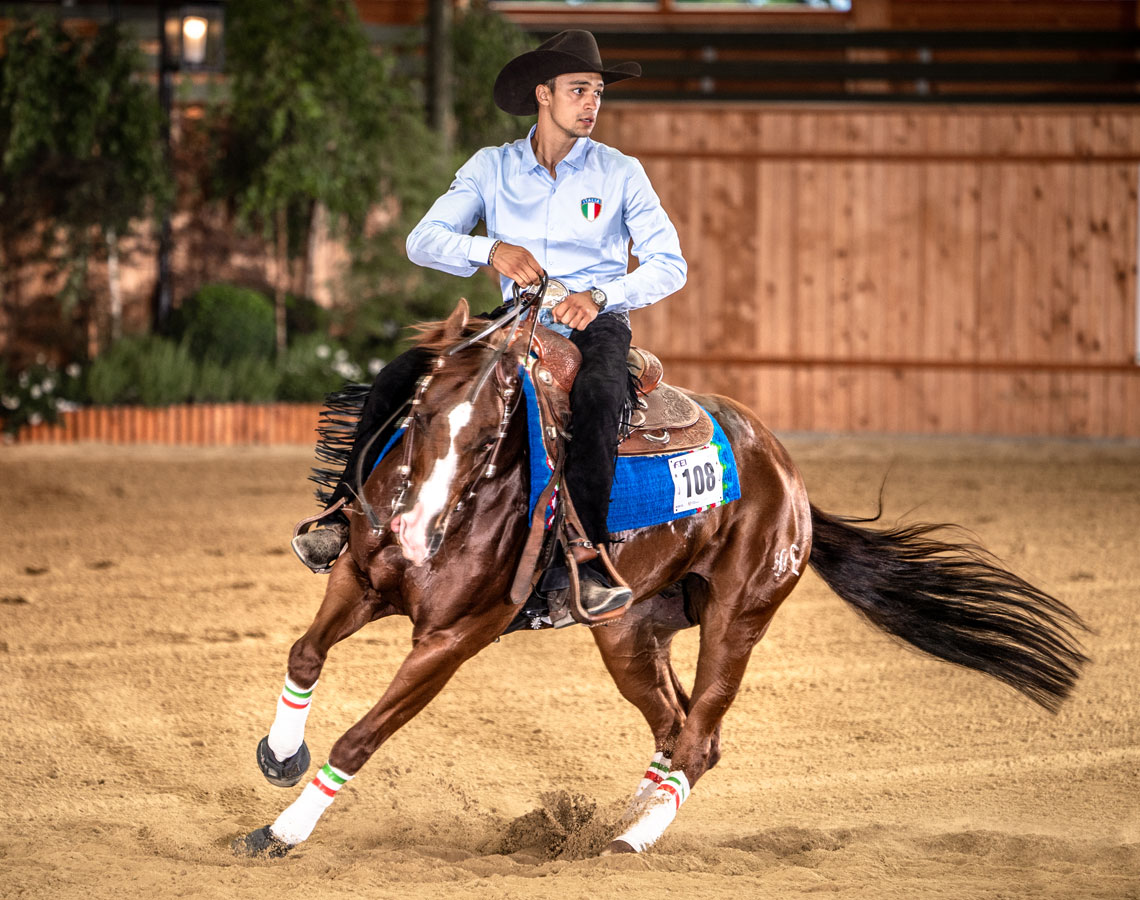
HESITATE
To hesitate is the act of demonstrating the horse’s ability to stand in a relaxed manner at a designated time in a pattern. In a hesitation, the horse is required to remain motionless and relaxed. All patterns require a hesitation at the end of the patterns to demonstrate to the judge(s) the completion of the pattern.
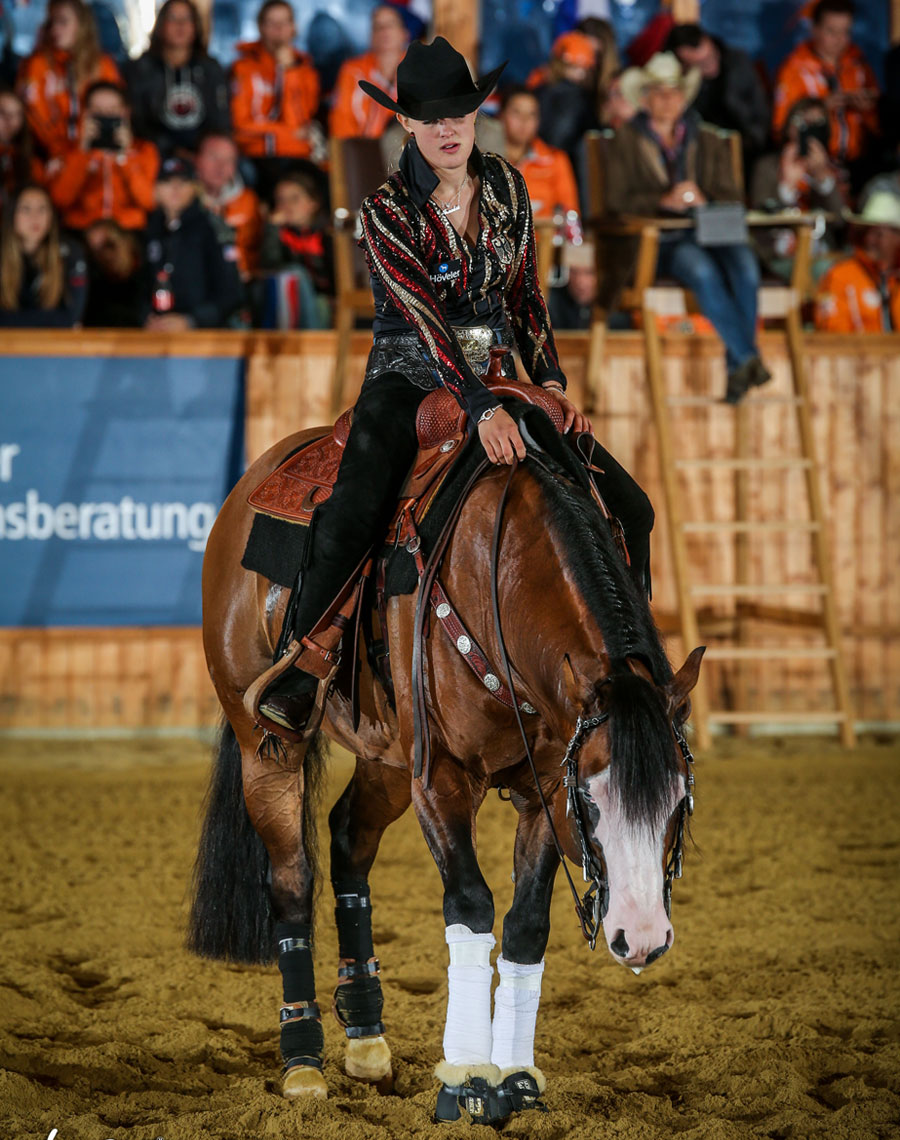
ROLLBACKS
Rollbacks are the 180-degree reversal of forward motion completed by running to a stop, rolling (turning) the shoulders back to the opposite direction over the hocks and departing in a canter, as one continuous motion.
The NRHA Handbook states no hesitation; however, a slight pause to regain footing or balance should not be deemed hesitation. The horse should not step ahead or backup prior to rolling back.
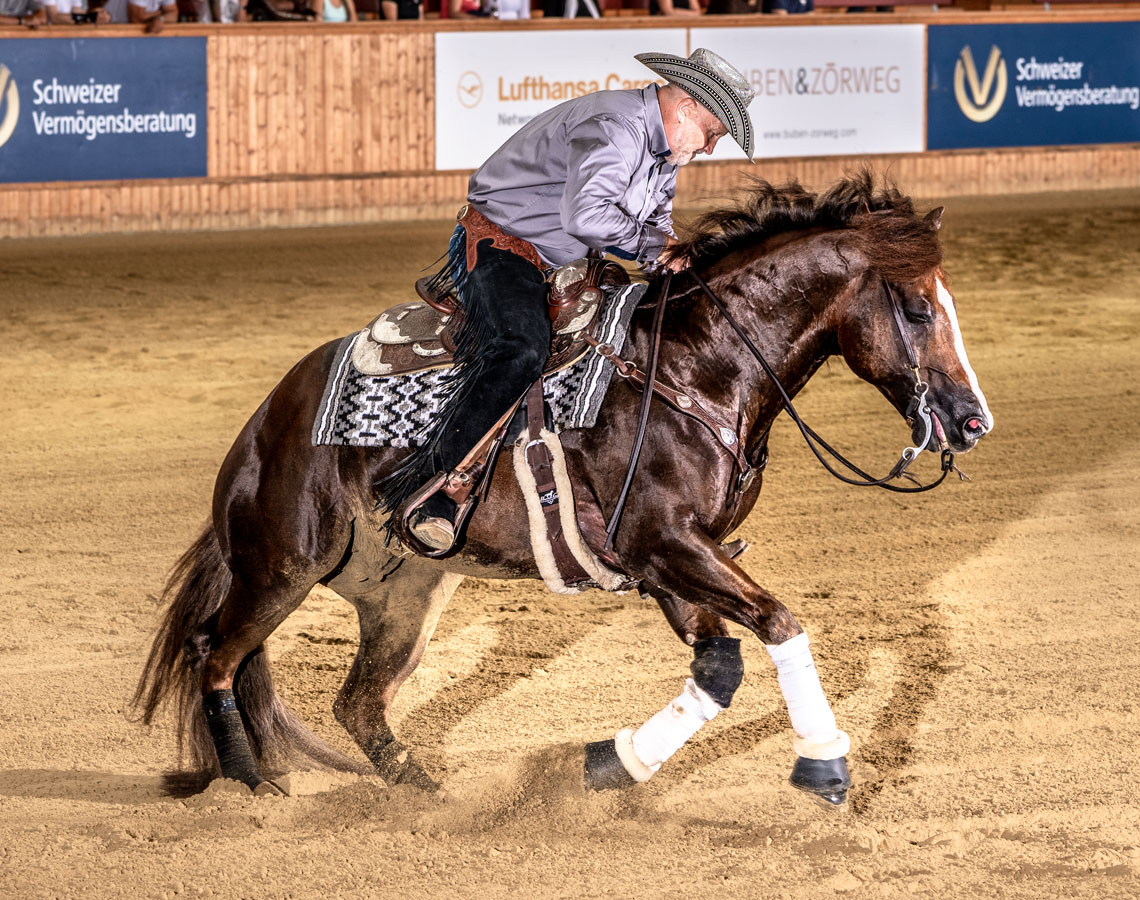
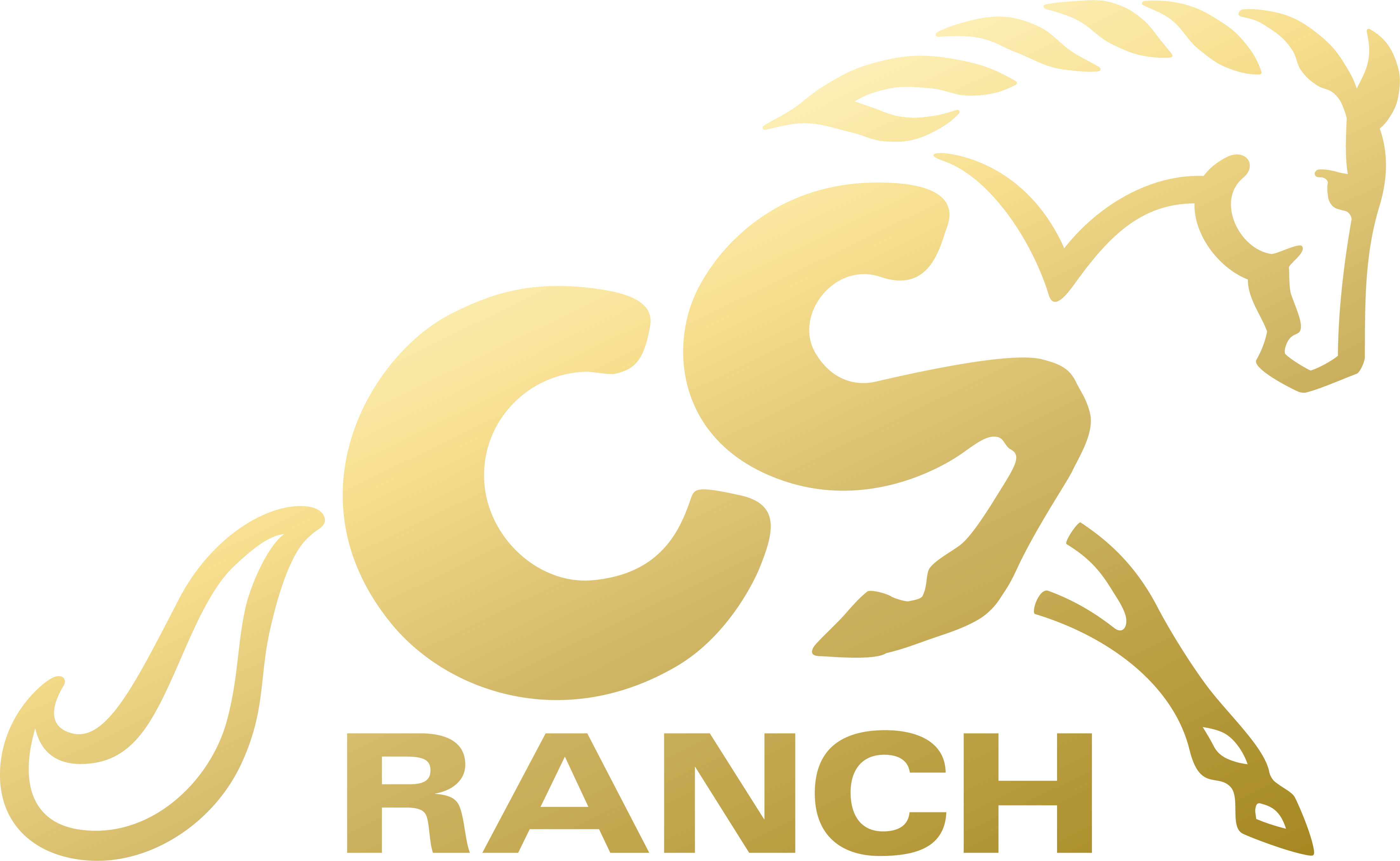
GIVRINS, SWITZERLAND
Contact: (Ranch, Horses, Show, Spa): ERIC OBRECHT • eo@cs-ranch.eu • Phone +41 79 5004886